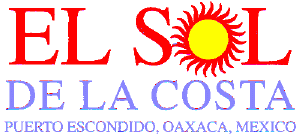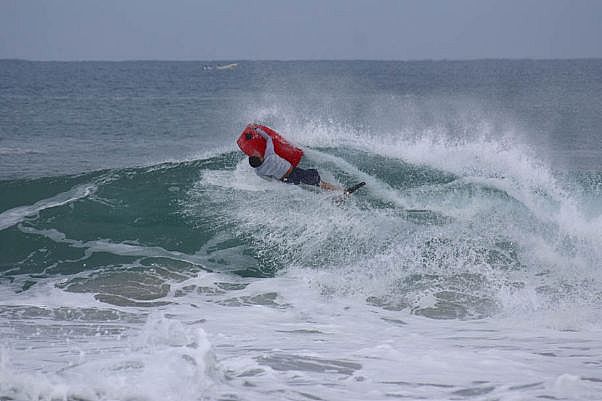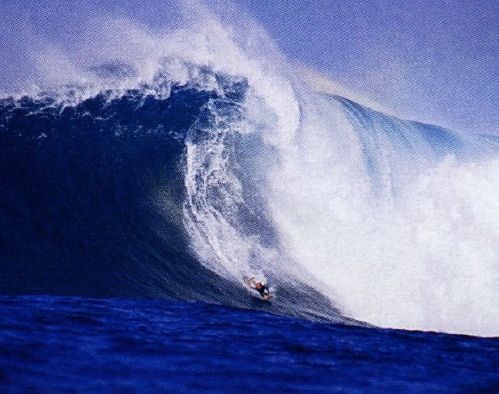


While the sport of surfing has seen enormous growth in the last decades, it has been eclipsed by the bodyboard or the boogieboard, to the point where for every surfer there are ten bodyboarders practicing today.
The reasons are simple. The boards are cheaper and easier to use and they are fun. As one's skill level develops, the greater maneuverability of the small boards allows such moves as the barrel roll, the tube, the spinner, the aerial, the 360 and reverse 360.
On that fateful day, staring out at the surf without a board to ride, Morey borrowed an electric carving knife and a household iron, whittled some scrap polyethylene foam into a small rectangular mat and covered it with newspaper.
He found his invention easy to produce and even easier to navigate. In 1973, he trademarked the name "Morey Boogie" for $10 and scrounged together enough money to place a quarter-page ad in Surfing magazine. Demand for Morey's boards was incredible. By 1977, he was producing 80,000 per year.
 Here was an activity that, unlike surfing, offered a gentle learning
curve and could be enjoyed immediately by even the most sedentary of
people. Boards were affordable less than $100 for the top of the line
and 10 bucks for a drugstore special and the sport caught on
worldwide.
Here was an activity that, unlike surfing, offered a gentle learning
curve and could be enjoyed immediately by even the most sedentary of
people. Boards were affordable less than $100 for the top of the line
and 10 bucks for a drugstore special and the sport caught on
worldwide.
At first, as lineups became congested with bodyboarders, many of them incompetent, resentment toward the sport quickly grew. Most surfers looked upon them as second-class citizens, refusing to yield on a wave and creating derogatory monikers such as "spongers" and "speed bumps." But like it or not, body-boarding was here to stay, and it soon found its way into competition and spawned its own pro-tours and professional organizations. The most important are the BIA, the Bodyboard International Association and the GOB, the Global Organization of Bodyboarding.
Eight-time U.S. champion Mike Stewart from Hawaii was the sport's first superstar. A master of the big-wave barrel, he rode the famous Pipeline deeper than any other human and launched unfathomable aerials and barrel rolls on sections many stand-up surfers avoided completely.
In contrast to surfing, which remains dominated by the United States and Australia, bodyboarding has acquired a more multi-cultural presence. Many of the world's top bodyboarders now hail from Brazil, South Africa, Portugal, Puerto Rico, Venezuela, Panama and México. Guilherne Tamega from Brazil set the pace by rising to topple Stewart in 1995, becoming the first Global Organization of Bodyboarding World Champion.
This first Bodyboard Contest Pro-Am could help establish Puerto Escondido as a mecca for this sport nationally and internationally, a status it now enjoys in the world of stand up surfing. Punta Colorada has been pretty much kept under wraps. The land is owned by the state of Oaxaca, which has floated various tourist development projects in the past, but its present status is undetermined.
 Access to Punta Colorada is by a dirt road at the state tourist office
at the second entrance to Bacocho, and by the road immediately opposite
the airport entrance.
Access to Punta Colorada is by a dirt road at the state tourist office
at the second entrance to Bacocho, and by the road immediately opposite
the airport entrance.
At the time of this writing, several of the professionals had confirmed their attendance at the Bodyboard Contest Pro-Am 2003. Also attending will be crews from Option and Rot Magazines, the leading bodyboard print media in the U.S.
The Open contest will offer $US 5,000 in prize money, with another $US 1,000 for the Drop Knee, a style of bodyboard riding in which the surfer begins in the familiar prone position, but then goes into a one-knee stance to achieve his maneuvers.
Contestants will be judged by the following criteria: 1) Size and duration of the wave; 2) Style of the individual rider and 3) Level of difficulty of the attempted maneuver. Registration is open until the 26th of the month, when the pre-tournament meeting will be held at 5:30 p.m. at the Hotel Posada Real.
More information is available at tournament H.Q.: Central Surf Shop, on
Zicatela (52 954) 582-2285.